In Iowa, it is possible to spot 9 different species of Finches. These are:
- American Goldfinch
- House Finch
- Gray-crowned Rosy Finch
- Pine Grosbeak
- Cassin’s Finch
- Evening Grosbeak
- Lesser Goldfinch
- Red Crossbill
- Common Redpoll
Want to learn more? This book on everything to do with Finches is a fantastic read!
Due to its heavy dose of Pacific wind and proximity to the thin Canadian air that birds seem to enjoy, Iowa will always have an abundance of flying animals.
The fact its northernmost inland peninsula is basically an extension of Montana’s national parks helps, too. The following is a list of finches that live in Iowa, or have a consistent enough seasonal presence that we can expect to spot one.
Want to attract finches? Take a look at our article!
What Finches can be seen in Iowa?
1. American Goldfinch
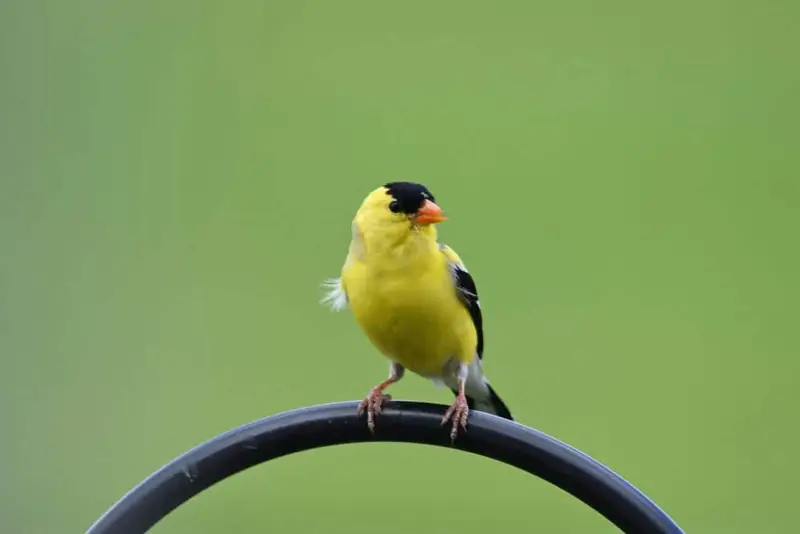
Like the house finch, this bird maintains a consistent presence throughout the US, especially in the northernmost states like Idaho.
Besides its proximity to the Canadian border, Idaho also benefits from the bird’s strong breeding presence in Montana, its neighbor.
As a result, the easily-spotted goldfinch can be seen everywhere from deep pine forests to inner-city parks to backyard feeders.
Its bright yellow plumes stand out anywhere, even with the stark blackness of its wings and forehead. The best time to spot this bird is in the summer between June and August when it moves about in flocks and builds nests in preparation for fall.
2. House Finch
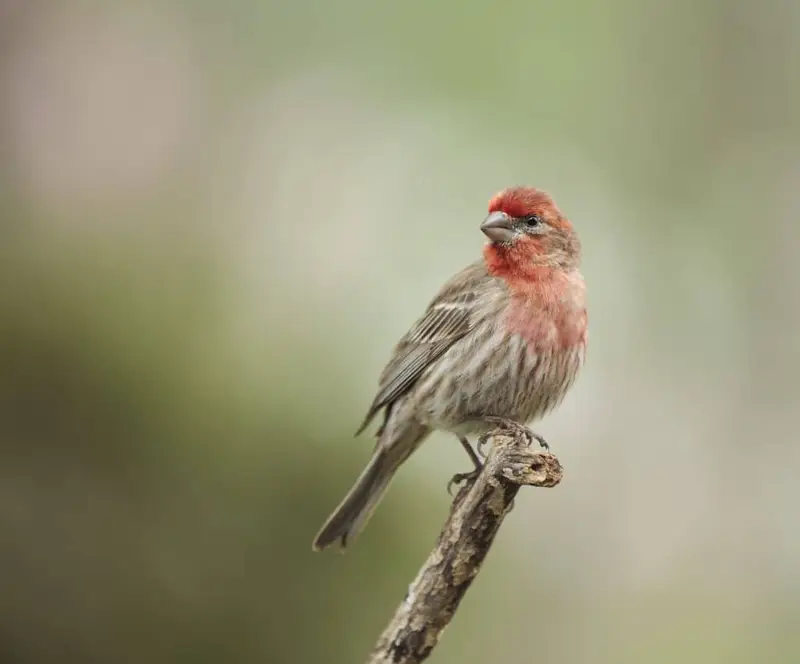
This formerly-domesticated finch has spread throughout North America after its humble beginnings as a pet import over a century ago.
After meeting with their kin who had come from the west (presumably from Asia by the same means), they have since spread to every state in the mainland US.
The house finch’s rose-colored face and neck can be indistinguishable from other finches with the same hues, but it’s lighter morpho of brown and white with dark wings is a bit more distinct.
These are among the most social birds in the states, essentially living as outdoor pets for a time if their source of food remains undisturbed.
3. Gray-Crowned Rosy Finch
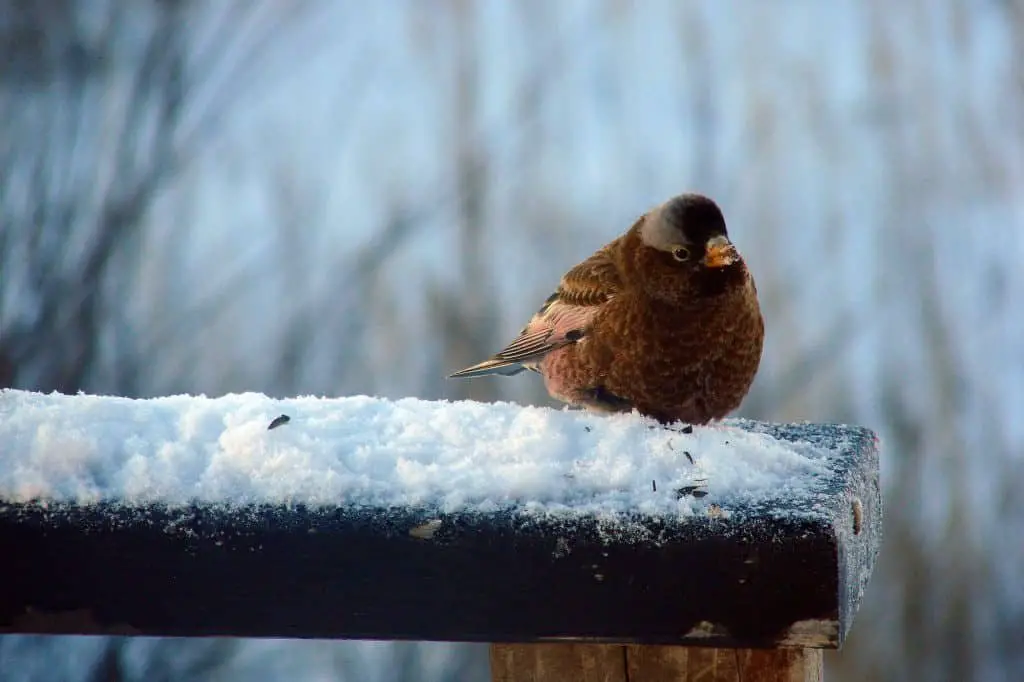
This appropriately-named finch is found all year in the northernmost part of Idaho, and less common throughout the central and southern parts of the state.
As they are natively Alaskan, and thus arctic, this highly-adaptable finch remains in the coldest parts of the state during winter, foraging at the forest’s edge and open tundra unless temperatures become too extreme.
It is recognizable by its trademark gray crown–which includes its face, neck, and crown- as well as its dark brown body. The ‘rosy’ part of its name refers to a gathering of feathers at the base of its body.
4. Pine Grosbeak
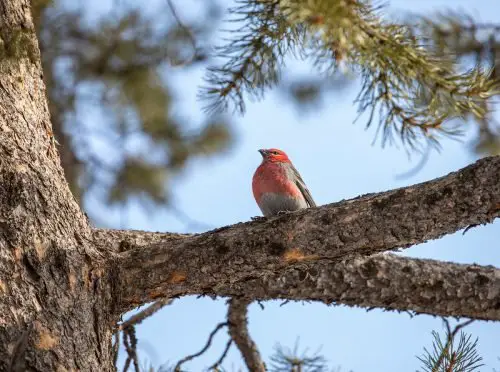
Relatively infrequent in North America, the pine grosbeak will sometimes make its way to the northeast portion of Idaho during the winter.
They are the more reclusive of the finch species, often hiding in dense deciduous forests until the foraging opportunities become thin.
At that point, they can be seen on the edges of branches unless we approach too close. They are hard to miss in the winter, with the rose-colored plumes on their heads and bodies, with black and white wings.
5. Cassin’s Finch
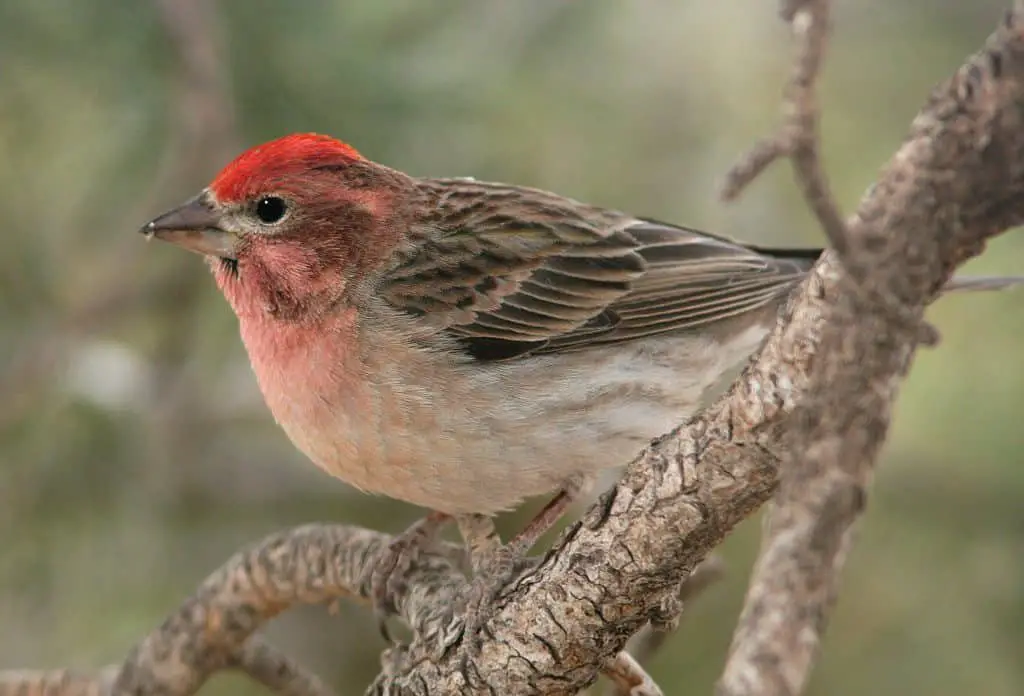
This finch breeds just north of Idaho on Calgary, so its forays into the US state are a matter of course.
As a result, it maintains a strong year-round presence, with flocks traveling back and forth as the weather changes. Look for its more subdued rosy hue throughout its head and neck, with a bright patch of ‘hot pink’ at the center of its forehead.
Elsewhere, it is generally light to dark brown in the back and wings, with white feathers across the belly.
These are mountain foragers who prefer high elevation and thin air, but they will come to neighborhoods and feeders if the bait is favorable.
6. Lesser Goldfinch
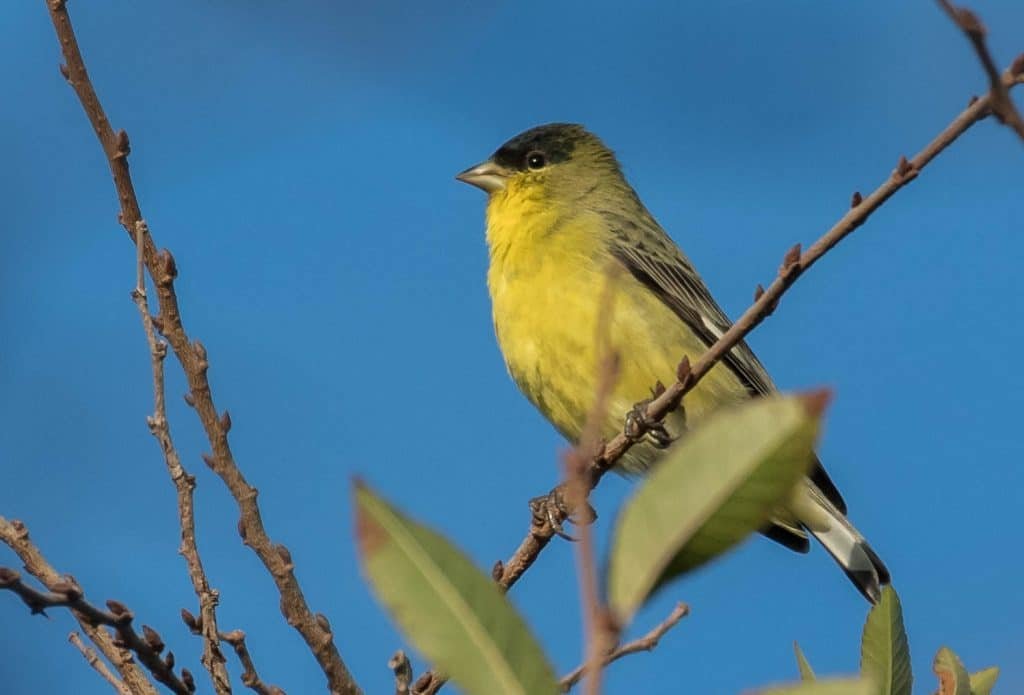
The rare U.S. breeder, the lesser goldfinch extends its breeding ground from Utah and Colorado, across the northern border into the southernmost part of Idaho.
It doesn’t gather anywhere else in the state since it’s a desert finch, but the breeding population means its presence is very full in those parts.
The ‘gold’ of its namesake represents its bright yellow face and belly. Like its American counterpart above, this is broken up by black and white markings, though the lesser’s are all across its back and crown, similar to a penguin.
Less-common morphs replace black with greenish-black.
7. Red Crossbill
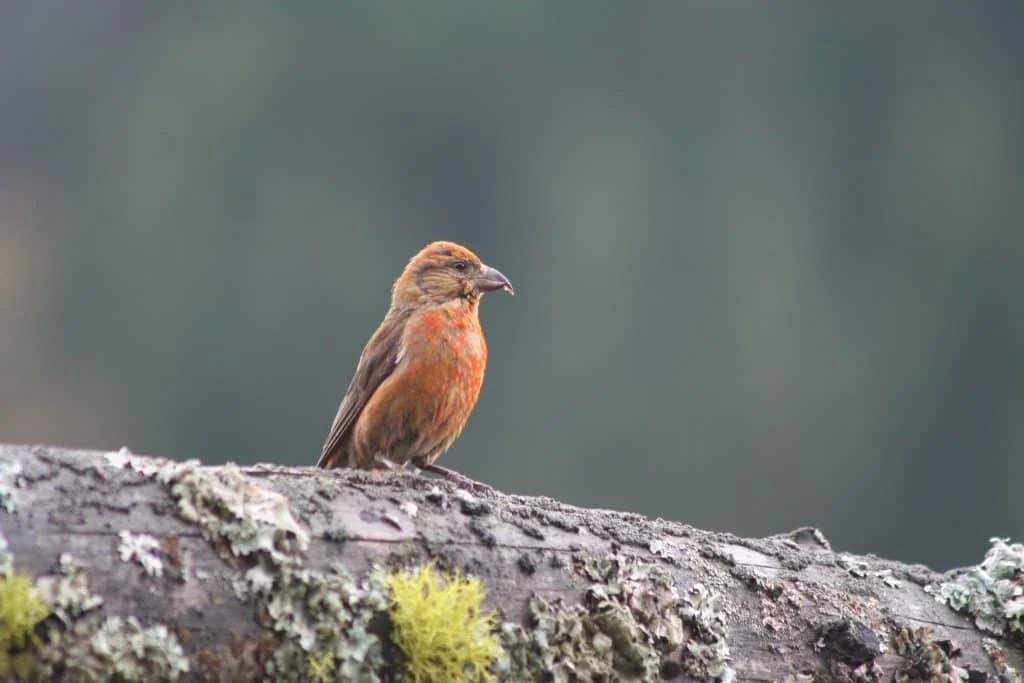
Always found among the pines, this finch is a stout traveler who likes to stay ahead of the weather changes.
Their presence is almost exclusively in the mountains in the northern part of Idaho, as they seem to avoid lowlands even in winter, where their presence in the state is most pronounced.
Their coloring varies in shades of red from the typical rose color found on many finches to a bright red color similar to a cardinal.
The wings are usually brown, and their distinctive beak (or ‘bill’) is hooked in opposite directions on top and bottom, so its tips cross, giving the bird its name.
The beak is useful for cracking open nuts and foraging in hard ground, both evolutionary adaptations for this arctic finch.
8. Evening Grosbeak
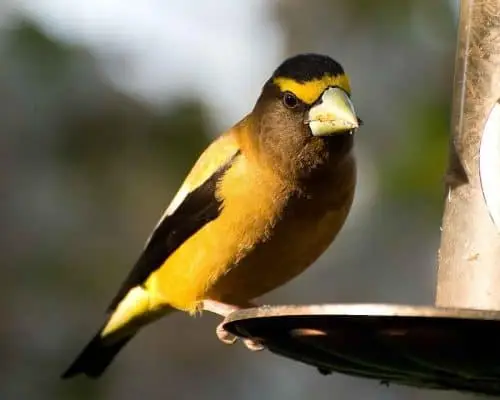
This finch hangs out in the landlocked peninsula of northern Iowa, foraging, and nesting among its fir trees every winter until it’s time to fly back home to Canada in spring. Its head is a yellow-black mix that blends into something closer to copper, where its body is lemon yellow.
The stark black and white contrast of its wings is similar to the goldfinch though it has a single bar of each color instead of repeating stripes.
You may also notice the grosbeak is more ‘stout’ than its kin, portly even, as well as the bright yellow “eyebrows” across the top of its eyes.
9. Common Redpoll
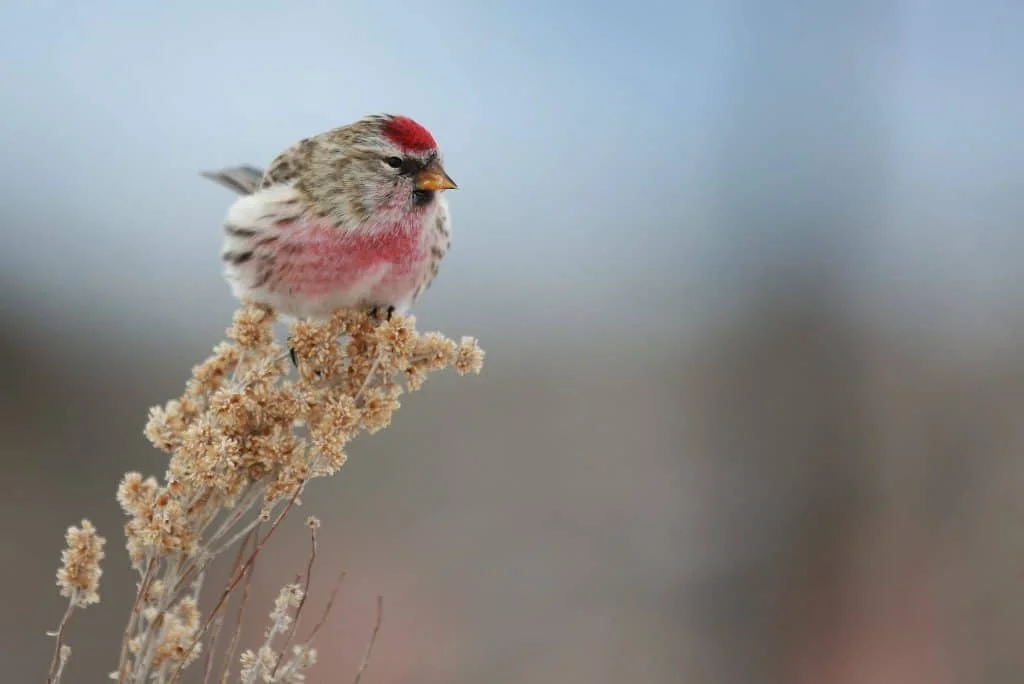
This is a winter visitor who gathers in the mountains when the snows have made food scarce farther north.
A true arctic bird, the redpoll breeds at the northernmost part of Canada, so it is comfortable in the frozen tundras of Idaho’s winter, but will return home when it gets too warm.
They are mostly brown and white in striped patterns that tend to be more brown on the back and more white on the belly, and they have a notable red patch on the forehead.
While they are woodland birds, the redpoll will also be at ease around humans, even in close proximity.
References
- https://www.audubon.org/field-guide/bird/american-goldfinch
- https://www.audubon.org/field-guide/bird/house-finch
- https://www.audubon.org/field-guide/bird/pine-siskin
- https://www.audubon.org/field-guide/bird/gray-crowned-rosy-finch

About Us
We are avid bird-watchers who recently retired, allowing us more time to travel the world. Fortunately, we have managed to visit numerous countries around Europe, Asia, and America. Watching and photographing birds has been a passion for many years and we are making the most of the extra time on our hands!
